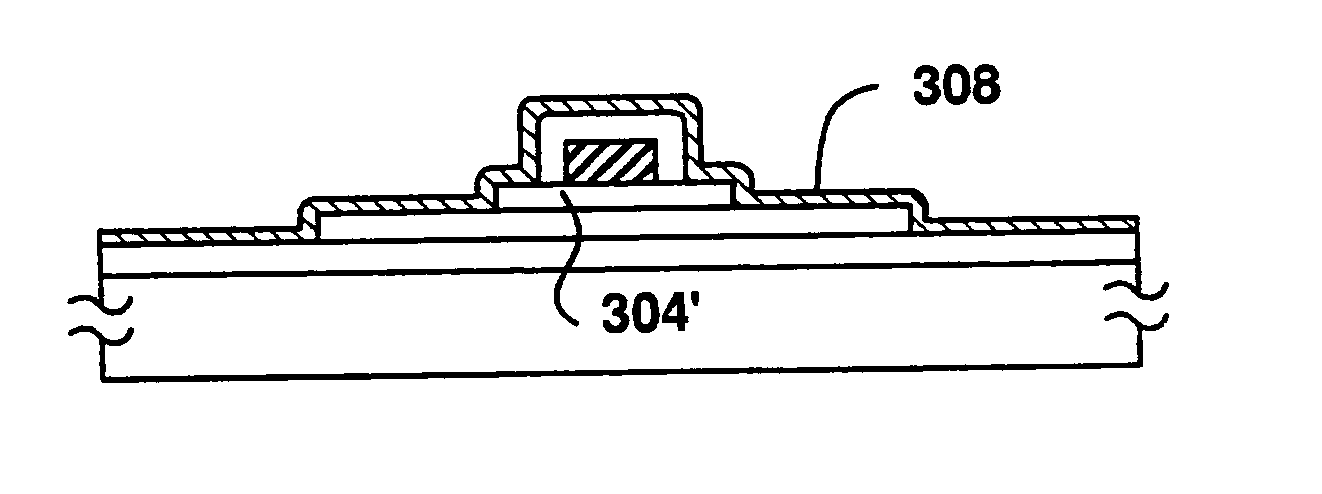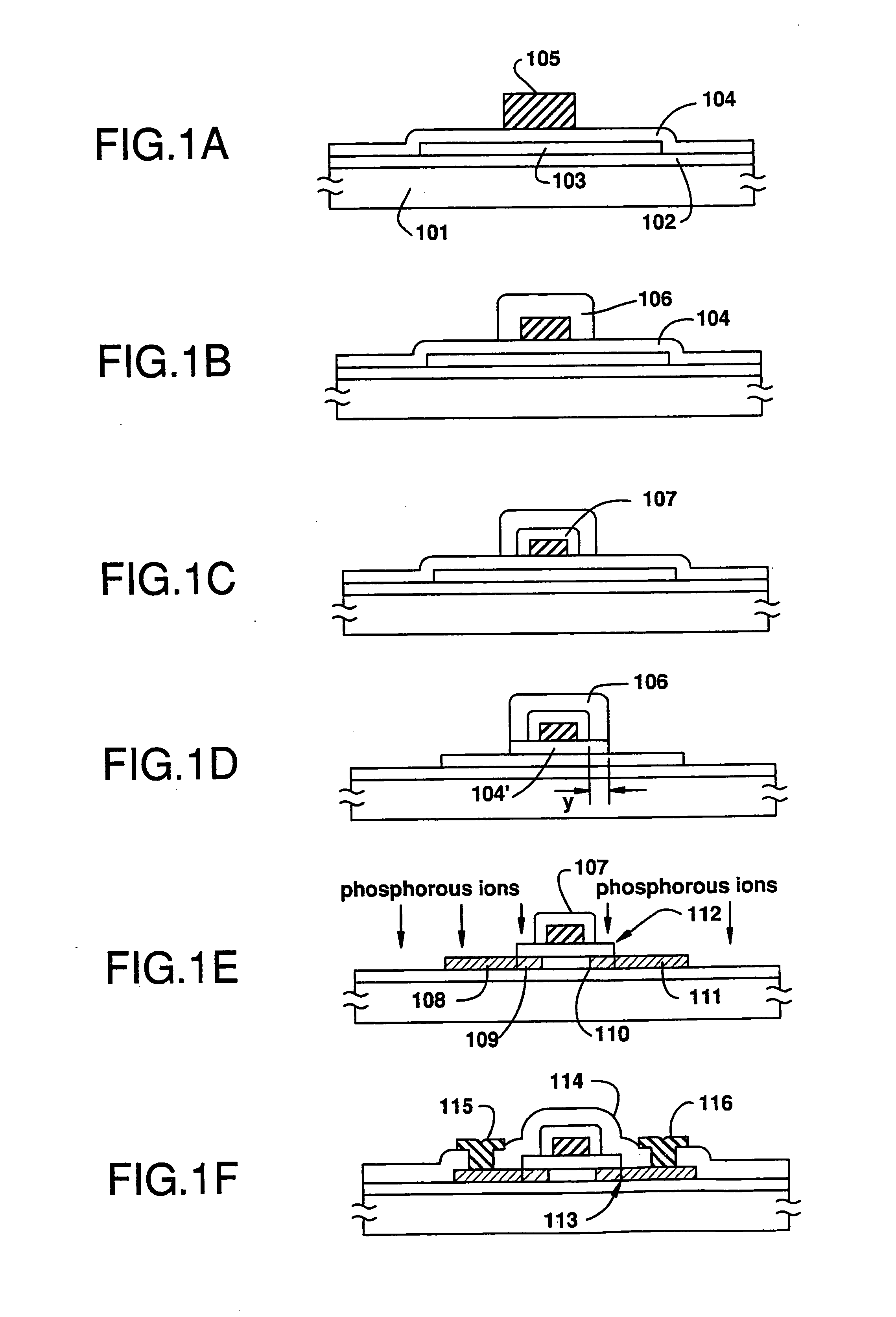Semiconductor device and method for manufacturing the same
a technology of semiconductors and films, applied in the direction of semiconductor devices, electrical devices, transistors, etc., can solve the problems of difficult to form insulating materials, unintentional etching of the base layer 602/b>, damage to the glass substrate, etc., and achieve excellent uniformity, high resistivity region, and low resistance of such films
- Summary
- Abstract
- Description
- Claims
- Application Information
AI Technical Summary
Benefits of technology
Problems solved by technology
Method used
Image
Examples
example 1
[0052] Referring again to FIGS. 1A-1F, a process of manufacturing a TFT will be discussed in more detail. A Corning 7059 glass substrate having a dimension 300 mm×400 mm or 100 mm×100 mm is used as the substrate 101. A silicon oxide film having a thickness of 100-300 nm is formed on the substrate as the base film 102 through sputtering in an oxygen gas, for example. However, it is possible to use a plasma CVD using TEOS as a starting material in order to improve the productivity.
[0053] A crystalline silicon film 103 in the form of an island is formed by depositing an amorphous silicon to a thickness of 300-5000 Å, preferably, 500-1000 Å through plasma CVD or LPCVD, then crystallizing it by heating at 550-600° C. for 24 hours in a reducing atmosphere and then patterning it. Instead of a heat annealing, a laser annealing may be employed. Further, a silicon oxide film 104 is formed thereon by sputtering to a thickness of 70-150 nm.
[0054] Then, an aluminum film containing 1 weight % S...
example 2
[0064] This example is an improvement of the Example 1, in which source and drain regions are provided with a silicide layer. Referring to FIG. 2A, the reference numeral 201 shows a Corning 7059 glass substrate, 202: a base film, 203: a silicon island, 204: an insulating film, 205: an Al gate electrode (200 nm-1 μm thick), and 206: a porous anodic oxide film (3000 Å-1 μm, e.g. 5000 Å thick). The same process as explained in the Example 1 is used to form these elements and the redundant explanation is omitted.
[0065] Referring to FIG. 2B, a barrier type anodic oxide film 207 of 1000-2500 Å thick is formed in the same manner as in the Example 1 after the formation of the porous anodic oxide 206. Then, a gate insulating film 204′ is formed by etching the insulating film 204 with the porous anodic oxide 206 used as a mask in a self-aligning manner.
[0066] Then, the porous anodic oxide 206 is removed by etching using the barrier type anodic oxide 207 as a mask. Further, ion doping of an ...
example 3
[0080] This example is a further variation of Example 2, in which the order of the formation of a metal silicide and the ion doping is changed. Referring to FIG. 3A, on the Corning 7059 substrate 301 is formed a base oxide film 302, island-like crystalline semiconductor (e.g. silicon) region 303, silicon oxide film 304, aluminum gate electrode 305 of 2000 Å to 1 μm, and a porous anodic oxide film 306 of 6000 Å on the side of the gate electrode. These are formed in the same manner as in the Example 1 as discussed with reference to FIGS. 1A and 1B.
[0081] Further, a barrier type anodic oxide film 307 is formed to 1000-2500 Å in the same manner as in the Example 1. Subsequently, the silicon oxide film 304 is patterned into a gate insulating film 304′ in a self-aligning manner as shown in FIG. 3B.
[0082] Referring to FIG. 3C, the porous anodic oxide 306 is removed in order to expose a part of the gate insulating film 304′. Subsequently, a metal layer such as titanium film 308 is formed ...
PUM
 Login to View More
Login to View More Abstract
Description
Claims
Application Information
 Login to View More
Login to View More - R&D
- Intellectual Property
- Life Sciences
- Materials
- Tech Scout
- Unparalleled Data Quality
- Higher Quality Content
- 60% Fewer Hallucinations
Browse by: Latest US Patents, China's latest patents, Technical Efficacy Thesaurus, Application Domain, Technology Topic, Popular Technical Reports.
© 2025 PatSnap. All rights reserved.Legal|Privacy policy|Modern Slavery Act Transparency Statement|Sitemap|About US| Contact US: help@patsnap.com



